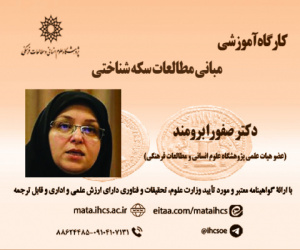منطقه گرایی آشیانه ای؛ ایران، روسیه و چین (مقاله علمی وزارت علوم)
درجه علمی: نشریه علمی (وزارت علوم)
آرشیو
چکیده
منطقه گرایی به عنوان یکی از الزامات سیاست خارجی کشورها از گذشته خود را بر کشورها تحمیل نموده است؛ اما الگوهای آن پیوند مستقیمی با تحولات سیستم بین الملل داشته به گونه ای که در وضعیت پیچیدگی، خود را در قالب منطقه گرایی شبکه ای و آشیانه ای نمایان ساخته است. تداخل بلوک های منطقه ای ایران، روسیه و چین به ایجاد شبکه منطقه ای آشیانه ای منجر شده است که خوشه های شبکه ای هرکدام از آن ها بخشی از این شبکه را شکل می دهند. هرچند ادبیات روابط بین الملل به توصیف ابعادی از منطقه گرایی این سه کشور پرداخته اند اما بایستی از سطح توصیف به علل و پیامدهای این نوع منطقه گرایی بر سیاست خارجی این سه کشور حرکت نمود و آن اینکه منطقه گرایی آشیانه ای و پیامدهای آن بر سیاست خارجی آن ها به ویژه در حوزه مدیریت و کنترل این شبکه چیست؟ پاسخ به این پرسش را بایستی در تداخل مرزی، ژئوپلیتیک، ژئواکونومیک و ژئوکالچر جست وجو نمود و از سویی تأثیرگذاری بر پویش قدرت و حرکت به سمت بازدارندگی هیبریدی جمعی ازجمله پیامدهای اصلی آن به شمار می آید. به این سبب مقاله از ادبیات موجود در این حوزه فاصله گرفته و منطقه گرایی آشیانه ای و پویش های نظم در روابط بین الملل و کنترل آن را از زاویه ای نوین یعنی شبکه آشیانه ای مورد بررسی قرار می دهد.Nested Regionalism: Iran, Russia and China
Introduction: The logic behind this article is based upon that Regionalism is one of the most prominent aspects of the foreign policy of the states in the world order and its forms related to types of international, which are distinguished by linear and nonlinear and in the latest form, complex and chaotic system. This system will lead to a model of regionalism that is distinguished from its simple and traditional under-named nest network model which its rules will govern on the foreign policy of Iran, Russia, and China. It has been said that these three countries are experiencing nested network regionalism. Their New regionalism is a product of the nesting of constructions, dynamics, power cycles, and especially the control system of the regional system that change shaping the regional order. Nested network regionalism can create joint responses to common challenges and the benefits of sharing common interests, such as a collective defense mechanism and joint exploitation of other resources cross-border this network. Despite the vast array of subjects covered few clear and interrelated researches can be identified. Its various dimensions are unknown.
Research Question: The question of this research is, what are the consequences of the nested network on the foreign policy of these three countries? Since the research questions emerged from a debate unfolded, the subject of how the analytical apparatus can be efficient is important.
Answering this question and solving the above-mentioned basic concern without considering the theoretical model that analyzes the situation related to nested networks is impossible and perhaps very difficult, and it requires following a path that is unclear due to the newness of the subject and many of its aspects. The nested Network apparatus constitutes one of the pillars of the modern science of complexity that can be used here, it can allow us to understand the functioning of the nested network and the emergence of collective phenomena.
Research method: From the methodology aspect, due to the nature of the research subject, the analogical model based on the nested network rules will be used.in this model, every international system consists of a set of systems, in other words, from the point of view of the network, every network contains a set of networks within itself, (network of networks) Nestedness in this research is a concept will apply where it was used to analyze patterns of overlap in clusters of different regional networks in a distinguished network.
Discussion: Although China, Russia, and Iran, are now often viewed as an aligned group, their cooperation has been bilateral so far. The issue of Iran, Russia, and China is mentioned as three countries whose foreign policy is based on the challenging world order and the design of the new order, so from this point of view, China Russia, and Iran prefer a multi-centric international system. In this respect, we can find several common points in their foreign policy and common challenges. In international relations theory, it has been accepted that a transition of power occurs when an emerging great power challenges the international order that is established, shaped, and controlled by the hegemonic power in the global power cycle therefore This transition occurs at the global level. This argument about the transition of power in a complex and chaotic order is not efficient and incorrect. In a nonlinear international system, the transition is bifurcated and will occur in regional and subnetworks and clusters (down-up).In this way, all the above-mentioned three states are at the center of the transition of power in the world order. This is where the second issue arises, and that is their position in the turning points included in the cycle of the transition of power. A survey of this issue shows a sharing in their position in the turning points at the regional network. This issue makes them common in the presence of increasing power dynamics, this arrangement of the regional network and nested network model of their foreign policy leads them to the strategic cooperation model. In this regard, the rules of nested networks are proposed as the rules of their cooperation.
The growing complexity in regional international politics and the starting of a new turning point in regional studies in a framework named nested network regionalism sheds new light on the foreign policy of Iran, Russia, and China relative to each other. Iran, China, and Russia are among the states that are involved in such regionalism for various reasons, including common participation in a part of the scene of operations in the international system and the transition of power, as well as overlap and synergy in various dynamics of the system, including power and economy. It is a strategic requirement in their foreign policy.
Their nested regionalism is based on complex international systems and their theoretical propositions. Based on this, overlapping in geography and neighborhood, Nestedness in regional dynamics and fluidity of power and flow of communication in their nested network, border crossing and feedback mechanisms between Iran, Russia, and China have caused a regional network that subordinate behavioral patterns of these countries to
especial rules including nested network’s rules. Network rules are allowed or restricted actions that are performed by these states. Overlapping in the dimensions of regional order such as structural, dynamic, cyclical, behavioral, and control are the most important parameters affecting their regional order. Generally, the effects of nested regionalism of Iran, Russia, and China are as follows:
Shaping the network environment and turning it into the main actor of deterrence against threats;
Helping to shape a power-threat equation in deterrence against a common enemy or rival,
Reproducing the defense-offense equation
Reproducing power and as a result, providing the ability to threaten the enemy.
Their Nested regionalism and nonlinear deterrence actions against an adversary
Nested regionalism increases the cost of Hostile actions of members against each other
Their Nest regionalism enables and strengthens the defense-offensive strategy thereupon their collective deterrence
Nest regionalism will finally push the deterrence model towards an institutional model and thereby make the collective deterrence of these three countries possible in the form of an institutional deterrence as a result expanding its layers to the external environment









